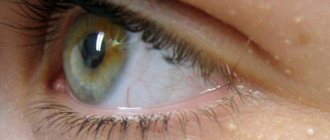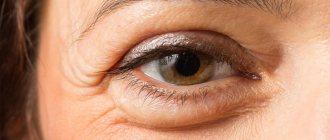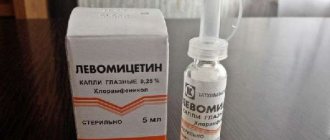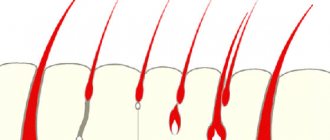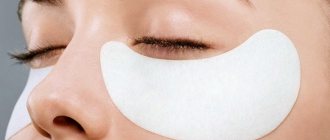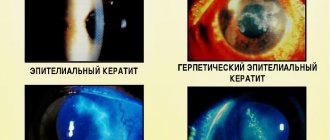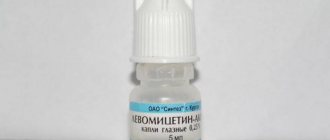A lump above the eyebrow in an adult, child or infant causes a lot of trouble for the patient. A bump on the eyebrows can cause undesirable health consequences. You need to know what a swelling above the eyebrows is, what it is and how to eliminate it.
A lump on the eyebrow looks unpleasant and bothers the patient
Treatment options for eyebrow bumps
Swelling in the eyebrow area can occur for various reasons. It can be eliminated both at home and in a beauty salon. The first option is simpler and more accessible. Do-it-yourself remedies for eyebrow bumps are usually inexpensive and easy to use. The disadvantage of this method is that the effect is not strong enough. Also, due to unprofessionalism, there is a high risk of side effects.
Removing swelling in a beauty salon is a more effective way. Specialists will easily select individual procedures and products that will allow you to quickly and effectively remove tumors. Most often, trips to beauty salons are an expensive pleasure; not everyone can afford to repeat them often.
Important! It is necessary to carefully choose both the salon and the specialist.
Causes of bumps on eyebrows
Eyebrow piercing
The appearance of a lump on the eyebrow under the skin can be caused by various reasons. The main ones include the following:
- consequence of an allergic reaction;
- benign or malignant tumor;
- insect bites (most often mosquitoes);
- the formation of a purulent boil;
- the result of mechanical trauma or inflammation, etc.
Swollen eyebrow above the eye
To treat swelling in the eyebrows, it is necessary to first determine the exact cause of this problem. The best option in this case would be to visit a doctor.
It is necessary to completely restore the history of the development of the disease and determine specific symptoms. This will allow the doctor to quickly establish a diagnosis and prescribe treatment. If you cannot see a doctor, you can try to determine the cause yourself.
A tumor on the eyebrows often appears due to purulent inflammation. This usually occurs due to infection entering the body. First, a small redness forms above the eye, which appears simultaneously with swelling. It constantly hurts and increases in size. Soon the tumor takes on a cone shape.
Additional Information. Infection can accompany colds, and can also occur through tattooing, contact with a dog, etc.
Two days after the inflammation of the boil appears, a pustule forms in the middle of the eyebrow - a necrotic core. After this, the pain intensifies, and in some cases an increase in body temperature is observed. Following this, a boil breaks out, and pus begins to flow from there. When it is completely released, the wound will quickly heal, but in its place there will be an inconspicuous scar.
In some cases, the boil does not burst, and the infection spreads to neighboring tissues. This complicates the treatment process, and if you do not see a doctor after this, the boil can turn into an abscess or cellulitis, which can last about a month.
A lump above the eyebrow often begins with small inflammations
If the eyebrow above the eye is swollen, this may be a symptom of a lipoma - a harmless lump that appears suddenly and lasts for several days. It is formed due to the growth of fatty tissues of the skin.
Lipoma is a benign tumor that does not cause pain and can go away on its own. However, when enlarged, it can become very swollen and put pressure on nearby blood vessels. This type of edema poses the greatest danger to children, including newborns. Most often, the lipoma does not become inflamed. This can only happen if an infection gets under the skin.
Note! Lipoma can be caused by a bruise or injury.
Atheroma is another type of benign tumor. Its origin is not as simple as that of lipoma. It manifests itself when adipose tissue grows, which clogs the sebaceous glands. This leads to the formation of a cyst. Atheroma does not cause pain. If you press the atheroma with your fingers, it will not move anywhere under the skin, unlike a lipoma.
Externally, atheroma is similar to a swollen abscess, since in both cases the eyebrow swells. However, no pus is released from the atheroma, since the sebaceous gland is clogged, and the substance filling the cyst is very thick. Sometimes it begins to become inflamed and may look like a boil, turn red and ache. Despite the absence of a necrotic core, in advanced cases a microabscess can occur. In this situation, it is necessary to visit a surgeon who will help get rid of atheroma.
The resulting injury can also cause the formation of a bump on the eyebrow. Such damage does not imply the presence of infection, but the symptoms are similar to those observed during the inflammatory process:
- swelling;
- redness of the eyebrow;
- painful sensations.
If the injury was too severe, the patient may begin to suffer from severe dizziness, severe tinnitus and periodic headaches. In this case, you must definitely visit a doctor. He will determine whether the patient suffered a concussion upon impact and whether there was any damage to bone tissue.
A swelling on the eyebrow is sometimes caused by a mosquito or other insect bite. The stung area begins to itch very much, and scratching the wound can easily cause infection. When going out into the fresh air, you need to use repellents that will drive away insects.
The most dangerous and harmful reason for the formation of a lump on the eyebrow is the development of a malignant tumor. There are certain categories of cells in the body that have the ability to grow uncontrollably, which is difficult to stop. Their sources most often are bone tissue, epithelium, muscles, etc.
After the formation of such swellings, a small edema or ball forms in this place, which does not have clearly defined boundaries. After a certain period of time, the swelling in this area increases and begins to produce metastases. This is usually accompanied by additional undesirable syndromes, in particular:
- paleness of the skin;
- severe weight loss;
- fatigue and constant weakness;
- loss of appetite, etc.
Important! If you have these symptoms, you should consult a doctor as soon as possible. If treated early, the chance of a full recovery is much higher. Malignant tumors in an advanced state most often result in death.
Herpes on eyebrows
In some cases, a lump or pimple on the eyebrow or eyelid is one of the symptoms of herpes. It develops as a result of a weakened immune system and increased susceptibility of the body to diseases. In such a situation, treatment should be aimed at increasing the patient’s internal strength.
To get rid of herpes, you must first consult a dermatologist. He will make an accurate diagnosis with all the explanations. After this, the specialist will refer the patient to the doctor for surgery.
Swelling on the forehead above the eyebrow
The presence of swelling on the forehead may be the most noticeable sign of an infection or a simple allergic reaction to an irritant, also called contact dermatitis. Is this swelling serious or not? For many people, any unexplained swelling can be a cause for concern. For people with a strong immune system or those who exercise regularly and eat a balanced diet, this problem usually goes away within a day or two.
When the swelling is not caused by another condition, then a simple warm compress and the use of anti-inflammatory ointments or gel should help return the facial skin to normal. Otherwise, if the swelling does not go away after a week, you need to undergo a medical examination to determine the cause. Only after a complete examination will the doctor be able to prescribe adequate treatment.
Among all the reasons that cause swelling of the forehead, the most common are the following:
- Contact dermatitis is when the body reacts after physical contact with an irritant. It can lead to an itchy and painful rash on the skin.
- An autoimmune disorder occurs when the body begins to react abnormally to normal and healthy body cells.
- Allergic reaction to food or soap. For many
Advice from experienced doctors
How to do eyebrows at home
In order to prevent the appearance of bumps on the eyebrows and speed up their treatment, you must follow the recommendations of doctors:
- Dress warmly, try to catch colds less often, and treat colds in a timely manner.
- Do not consume foods or contact surfaces that can cause allergies.
- Protect yourself from insect bites and spray with chemicals.
- See a doctor immediately after your eyebrow becomes swollen.
Under no circumstances should you squeeze out the cones yourself.
Lumps on the forehead above the eyebrows can be easily eliminated using special products and procedures. Removing a tumor above the eye under the eyebrow is much easier when the cause of its formation is known.
Swelling above the eyebrows due to sinusitis
Methods for treating sinusitis without surgery:
• nasal rinsing using the moving method (“Cuckoo”);
• anemia of the nasal mucosa;
If conservative treatment does not help, then surgical treatment is possible:
• septoplasty (correction of the nasal septum);
Sinusitis in children often occurs during acute runny nose, flu, measles, scarlet fever and other infectious diseases, as well as due to disease of the roots of the four upper back teeth.
Chronic sinusitis occurs with repeated acute inflammations and especially often with prolonged inflammation of the maxillary sinuses, as well as with chronic runny nose. A known role is played by the curvature of the nasal septum and the congenital narrowness of the nasal passages. The odontogenic process often has a sluggish chronic course from the very beginning. There are also vasomotor and allergic forms of the disease, which are observed simultaneously with the same phenomena in the nasal cavity. Symptoms and course depend on the form of the lesion and do not differ from symptoms in adults.
Sinusitis in children is most often successfully treated with conventional pharmacotherapy, which the doctor selects during consultation. Rinsing the paranasal sinuses (without puncture) is carried out only in cases of severe pain or copious discharge of pus.
Prevention should be aimed at timely treatment of the underlying disease, eliminating predisposing factors, without waiting for symptoms of sinusitis to appear.
What to do if your forehead hurts due to sinusitis? According to statistics, sinusitis is one of those diseases for which people turn to doctors already in an advanced chronic form. There are quite a lot of people who treat a runny nose on their own for several weeks, take painkillers and do not take this runny nose seriously.
But when the pain of sinusitis begins during the next exacerbation, there is no time for jokes.
Pain in the forehead with sinusitis does not go away. It's sharp and intense. Patients report that they feel so much pressure in the forehead that it feels as if their sinuses are bursting.
The pain becomes more intense when coughing, sneezing, when turning the head, especially when bending forward. The cause of pain is a large amount of pus in the sinuses and, as a result, increased pressure in the sinuses. And already an increase in pressure causes pain in the projection of these sinuses.
An increase in the intensity of pain when tilting the head indicates that sinusitis has worsened. The pain radiates in sharp impulses to the nose, teeth, and becomes diffuse.
In the chronic form of sinusitis, pain in the forehead increases in the evenings. But with an exacerbation, the picture is identical to that of acute sinusitis.
Since the human body uses pain as an opportunity to transmit a signal about an increasing disease, in order to get rid of it it is necessary to cure the disease.
The treatment regimen for sinusitis by ENT doctors is determined for each person individually. This can be conservative treatment or surgical. It all depends on the severity of sinusitis, the age of the patient, and concomitant diseases.
Non-steroidal anti-inflammatory drugs have a good effect on pain relief. They have an anti-inflammatory effect, therefore they reduce the severity of inflammation and relieve swelling. The tension in the sinuses is relatively reduced and the pain goes away. Their main representatives: nimesil, ibuprofen, dexalgin, ketolong. Pain from sinusitis is quite difficult to relieve. And if it stops, it soon appears again.
All drugs in this group are not recommended for use in patients with erosive and ulcerative lesions of the gastrointestinal tract. They themselves can contribute to the appearance of erosive changes.
The use of antibacterial drugs is recommended.
Despite the fact that sinusitis is usually caused by viruses, a secondary bacterial infection often occurs, which complicates the course of sinusitis. To determine the presence and type of bacteria, it is recommended to culture the discharge from the nose and throat to determine the presence of bacteria in it and their sensitivity to antibiotics. Amoxicillin and macropen are often used.
For local action, antibiotics are used in the form of a spray. For example, isofra, bioparox. Before using them - 15 minutes before - it is necessary to drip vasoconstrictor drugs into the nose in order to free up the nasal passage a little and the antibiotic spray can penetrate directly to the sinuses.
As a rule, the test result is not waited for to prevent the disease from developing. The patient is prescribed broad-spectrum antibiotics, and after receiving the result, the treatment is adjusted.
Only a specialist should prescribe antibacterial drugs.
If sinusitis has been going on for a long time and is severe, it is often the competent introduction of an antibacterial drug into the treatment regimen that leads to a clear improvement in the condition.
In severe cases, it is recommended to use antibiotics parenterally or intramuscularly.
The use of antiviral therapy is mandatory.
The drug sinupret is one of the most popular antiviral drugs. It contains leaves of sorrel, verbena, elderberry, primrose, and gentian. This drug is well tolerated.
It has no side effects and is not allergenic. Sinupret has a significant anti-inflammatory effect. It enhances the secretion of mucus, thinning it. It does not cause a feeling of dryness in the nose.
Sinupret is prescribed even to small children. It is this drug that is credited with the ability to cure sinusitis even in an advanced chronic form due to its pronounced immunomodulatory property.
In addition, you can use enzymatic preparations, for example, rhinofluimicil. It thins nasal secretions, allowing them to flow out of the nose in larger quantities. This reduces the pressure in the sinuses.
Vasoconstrictor drugs are used. But you cannot use them regularly for more than a week.
In order to make the discharge more liquid and clear the nose of remaining mucus, microbial and purulent deposits, rinse the nasal cavity with special sprays containing mucolytic substances, for example, Aquamaris, Sinuforte. For the same purpose, you can use a solution of manganese sulfate or furatsilin.
To treat sinusitis, a surgical puncture procedure is also used. Its essence is to create an artificial message for the outflow of sinus contents. Then the pressure in the sinuses decreases and the pain decreases.
Indications for such a puncture are limited. One of them is the lack of effect from conservative therapy, as well as a condition where pain continues to increase. Surgical treatment is indicated if an abscess appears under the eyeball. Delay in this case leads to vision impairment, even complete loss. In addition, a puncture is also indicated if an X-ray examination shows a fluid level in the maxillary cavities, which indicates the presence of a purulent cavity formation.
There are also good reviews about alternative treatment options for headaches due to sinusitis. These include acupressure.
You can also use your grandmother's advice. Nasal rinsing works well. You can take, for example, 1 tsp per glass of warm water. salt and soda. You need to rinse your nose with this solution. The more often the better.
The result is effective when instilling aloe and Kalanchoe juice into the nose. We recommend beet juice in the form of nasal drops.
Rinsing the nose with a decoction of chamomile, plantain, and calendula also gives good results.
There is another folk recipe for treating sinusitis. The ingredients are: potato juice, blue onion juice, liquid honey. Everything needs to be taken in equal proportions and mixed. Place these drops into your nose three times a day. Between procedures, store the mixture in the refrigerator.
You can rinse your nose with a solution consisting of beet juice, salt and plain water. Beet juice is diluted with water in a ratio of 2:1, a little salt is added.
You can wash it with a decoction of chamomile and sage.
Traditional healers also recommend an ointment made from alcohol, vegetable oil, onion juice and dark laundry soap. Everything is taken in equal proportions, placed in a water bath in a container and heated until the soap is completely melted. After this, the ointment is ready, you just need to let it cool.
Make a cotton turunda or wrap a little cotton wool around a match or toothpick. Then it is dipped in the resulting ointment and inserted into each nostril in turn for 15-20 minutes three times a day. The entire course lasts 3 weeks.
The danger of advanced sinusitis lies in the possibility of infection spreading from the nasal sinuses to nearby organs: the orbital area and intracranial organs.
Almost everyone has experienced such a condition as swelling at least once. Some do not attach any importance to it, but for others it is a serious problem. So in what cases should you worry, especially if there is swelling of the forehead, eyes, or other parts of the face, and when should you not worry too much about this?
For women, this is a very pressing problem, and it is necessary to understand the reasons and get rid of it; appearance suffers first of all. Knowing that there is a predisposition to swelling, it is important to know how to avoid it. In what cases does fluid accumulate?
Drinks that remove water from the body (tea, coffee). They have a diuretic effect, and this is a signal to accumulate it.
Consumption of salty foods. It is salt that is able to retain liquid, which is why thirst is so common after eating salty foods.
Lack of pure water. When drinking various drinks, the body accumulates water for future use.
It all depends on how and at what time the swelling appeared. If it is a blow, it always provokes swelling in the affected area of the forehead or eyes, so depending on the severity of the injury, a number of measures must be taken to eliminate or prevent severe swelling of the eye.
After a blow, there is always a lot of blood on the forehead and in the bridge of the nose if the skin is cut. But there are cases when hematomas form, and it is not worth leaving the victim without medical care, as there may be serious consequences.
Any injury is insidious, and even if there is no particular damage, this does not mean that everything is in order. As for the child, he is exposed to constant risks, since for a long period he walks poorly, then moves a lot, and experiences one blow after another. Most often, the forehead and eye are affected, swelling of the eyelids occurs immediately after the blow, the eyes become swollen, and urgent help is required.
First of all, it is necessary to localize the swelling and its spread. Applying a cold compress can significantly reduce the size and severity of swelling. What you apply to relieve symptoms should be gentle. If you don’t have such an object, then an ice cube will do; you can use it to wipe the place of impact on your forehead or nose. A towel dampened with cold water will do.
It is difficult to persuade a child to endure the cold in the area where the blow was struck, whether it is the forehead or another part of the face. But this must be done, since even a short-term compress will help avoid bruises and relieve swelling.
But not only a blow can cause this condition; there are a number of diseases that cause swelling of the eyes, eyelids, and forehead. For example, thrombosis of the cavernous sinus causes such symptoms, and at the first signs of the disease it is imperative to consult a doctor. All infections in the eye and nose area can significantly disrupt the fluid balance; this can be sinusitis, sinusitis, inflammation of the tonsils, lymph nodes, even teeth.
For example, stye in the area of the eye and eyelids appears quickly, and by using special means in time, you can quickly get rid of it. The main thing is to know what these means are and how to use them.
The reasons why swelling occurs can be very different, and by understanding how it occurs, you can effectively treat it, although it is quite difficult to remove the swelling. Excess fluid and blood, which may appear if there was a blow, accumulates in the area of the eyes, eyelids, forehead, a feeling of discomfort arises and there may even be pain.
The reasons may be as follows:

